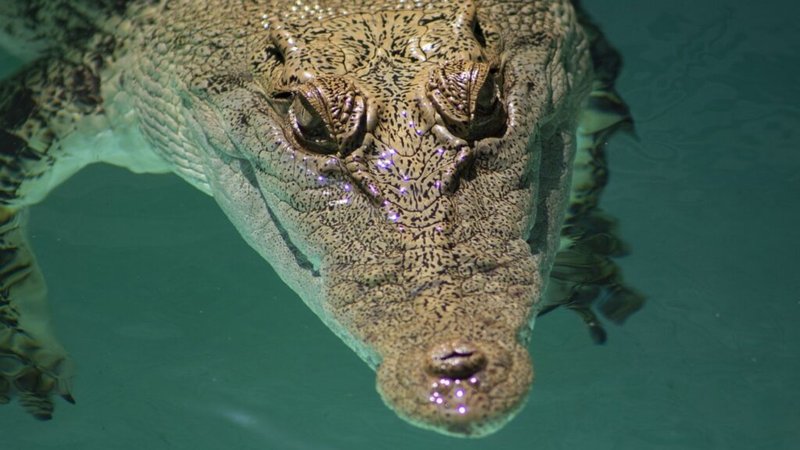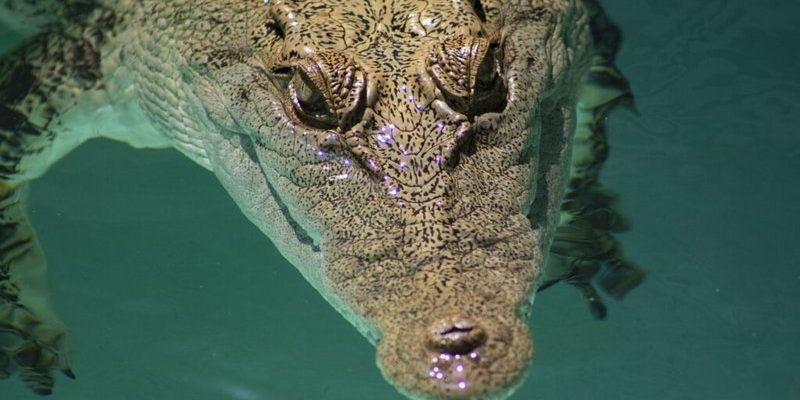
What makes saltwater crocodiles so fascinating? Well, they’ve been around for millions of years, practically unchanged, and they’ve got some surprising tricks up their sleeves. From their impressive hunting techniques to their complex social structures, there’s a lot to unpack. If you’re curious to learn more about these remarkable creatures, settle in with your favorite drink, and let’s explore some mind-blowing facts about the saltwater crocodile.
1. They Are the Largest Reptiles on Earth
You might be surprised to learn that saltwater crocodiles can grow to be over 23 feet long, weighing up to 2,200 pounds or more. That’s roughly the length of a small bus and about the weight of a car! Imagine spotting one of these giants in the wild—it’s no wonder they often put fear into the hearts of those who encounter them.
The title of largest reptile isn’t just about size; it’s also about how they dominate their habitats. Saltwater crocodiles are known for being fierce predators, and their sheer size allows them to take down large prey, including deer and even smaller sharks. Honestly, when you see a saltwater croc, you realize just how distinct and powerful they are in their environment.
2. Their Habitat is Surprisingly Diverse
Despite their name, saltwater crocodiles can thrive in a variety of environments. They’re typically found in brackish and saltwater areas, such as coastlines, rivers, and swamps, but they can also venture into freshwater. This adaptability is what makes them so successful and widespread.
These crocodiles are found in regions from Southeast Asia to northern Australia. It’s fascinating to see how they can navigate different habitats, whether it’s basking on a sunny riverbank or lurking in the depths of a tropical lagoon. You might be wondering how they manage such versatility; their remarkable physiology allows them to tolerate varying levels of salinity, making them true masters of their domain.
3. They Have a Unique Hunting Style
When it comes to hunting, saltwater crocodiles are like ninja assassins of the animal kingdom. They use a technique called “float-and-wait,” where they remain almost completely submerged with just their eyes and nostrils above water. This stealthy approach enables them to ambush unsuspecting prey, whether it’s fish, birds, or even large mammals that come too close to the water’s edge.
Here’s the thing: their speed and agility in water can be quite shocking. A saltwater crocodile can swim at speeds up to 20 km/h (around 12 mph) in short bursts, making them formidable hunters. So, you can imagine how important it is for their survival to master this ambush strategy. It’s almost like watching a well-choreographed performance when you see them in action.
4. They Can Live Over 70 Years
Saltwater crocodiles have incredibly long lifespans, with some individuals living over 70 years! That’s not just a random number; it’s a testament to their resilience and strength. They can continue to grow throughout their lives, which is quite different from many other animals.
This endurance means that some crocs can become quite the local legends. Imagine a saltwater crocodile that’s lived through decades of changing environments and has witnessed the evolution of its habitat! Their longevity adds an air of mystery to these creatures, as the experiences they accumulate over time must be incredible.
5. They Communicate in Intriguing Ways
You might think that crocodiles are silent creatures, but they have a whole repertoire of sounds they use to communicate. They can bellow, grunt, and even hiss, particularly during mating seasons or when they feel threatened. These vocalizations can carry a long distance, which makes them effective signals in the wild.
Moreover, young crocodiles also use specific sounds to communicate with their mothers, especially when they need help. Imagine a baby croc calling out for its mom from the safety of the water—it’s a bit heartwarming, isn’t it? This shows that there’s more to their social structure than meets the eye.
6. They’re Excellent Swimmers
As their name suggests, saltwater crocodiles are comfortable in saltwater, but they’re also exceptional swimmers. Thanks to a unique muscular structure and a powerful tail, they can easily glide through the water with minimal effort. Their streamlined bodies allow them to cover large distances, which is essential for hunting and exploring their territory.
You might even find them swimming in open ocean waters! It’s not uncommon for these reptiles to travel hundreds of miles in search of food or new habitats. This impressive navigational ability enhances their adaptability, allowing them to thrive in various environments.
7. They Have Impressive Senses
Saltwater crocodiles are equipped with extraordinary senses that make them highly effective hunters. They have acute vision, especially in low light, which means they can spot prey from quite a distance. Additionally, their sense of smell is finely tuned, allowing them to detect scents from far away.
Then there’s the skin’s sensory capability. Their skin is covered in tiny, sensitive receptors that can detect vibrations in the water. Think about it like a built-in alarm system—if something moves in the water, they know about it. This combination of senses contributes to their prowess as apex predators.
8. They Are Conservation Success Stories
It may come as a surprise to learn that saltwater crocodiles were once on the brink of extinction due to hunting and habitat loss. However, conservation efforts have led to their population recovery in many regions. These efforts include habitat protection and regulations on hunting.
This successful turnaround is a fantastic example of how conservation can work. It also highlights the importance of protecting ecosystems—not just for the crocodiles but for the health of our planet as a whole. If you ever get a chance to see these magnificent creatures in their natural habitat, it’s a rewarding reminder of nature’s resilience.
9. They Have Unique Reproductive Habits
Saltwater crocodiles have some interesting reproductive behaviors. Females typically lay around 40-60 eggs in nests made from vegetation and mud. These nests are strategically located near water bodies, providing safety for the eggs as they incubate.
What’s fascinating is that the temperature of the nest can determine the gender of the hatchlings. Warmer temperatures often produce males, while cooler temperatures yield females. This remarkable adaptation ensures a balance in their population, which is essential for their survival as a species.
10. They Play a Vital Role in Their Ecosystem
Saltwater crocodiles aren’t just impressive predators; they play a crucial role in their ecosystem. By controlling the populations of prey species, they help maintain a balance in the food chain. Their presence can influence the behavior and distribution of other wildlife, ensuring a healthy environment.
Additionally, when they hunt and consume prey, they contribute to nutrient cycling. As they hunt and feed, they create opportunities for scavengers and detritivores, which enrich the ecosystem. They are, in essence, nature’s custodians, keeping everything in balance.
In conclusion, saltwater crocodiles are not just formidable predators; they are fascinating creatures with unique adaptations that have allowed them to thrive for millions of years. From their incredible size and hunting techniques to their roles in ecosystems and conservation efforts, there’s so much to appreciate. Understanding these remarkable reptiles helps us realize the importance of respecting and protecting our natural world. So, next time you think of saltwater crocodiles, remember that there’s more to them than meets the eye!

